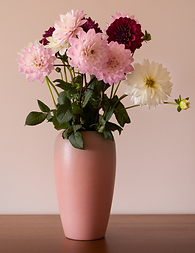
Dahlias add continuous color to any sunny garden. There are thousands of cultivars (varieties) to choose from. You can find them in almost every color, and the blooms range from discs to rays to multiple petalled pompoms. Dahlias make wonderful cut flowers and have a long staying power in vases. They bloom profusely from July until the first frost, sometimes even into December if you live in a mild region. Read on to learn how to grow dahlia plants and make your yard a sea of lasting color.
(Some of the links within this post are affiliate links on which I receive a small compensation from the sale of certain items with no extra cost to you.)
(As an Amazon Associate I earn from qualifying purchases.)
Quick Facts About Dahlias
1. A dahlia is a perennial in zones 8 and warmer and can stay outside over the winter. If you live in a cooler zone, 7 or below, the dahlias will have to be dug up at the end of the season.
2. Dahlias grow from tubers, which are swollen portions of underground stems, or rhizomes that grow laterally or horizontally. Each produce “eyes”, similar to potatoes, from which the plants grow.
3. They quickly multiply. By the end of the season each tuber may produce around 10 baby plants.
4. Dahlias bloom in almost every color, from white to bright yellow, deep orange, warm reds and maroons, and rich purples.
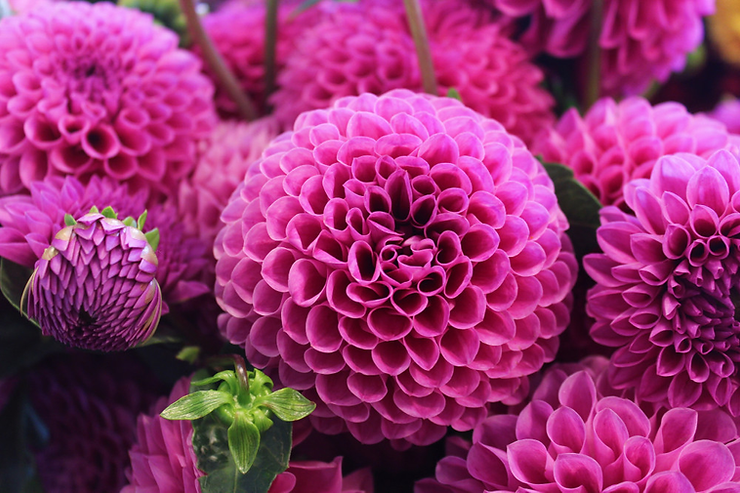
5. Unfortunately, dahlias do not have a scent but they have a velvety texture and a mildly sweet flavor with spiced overtones. They have been used in recipes such as quesadilla packets with dahlias. For a more in-depth description of dahlias’ nutritional value, click here.
6. Their stems are hollow, which allows them to soak up and retain plenty of water during droughts. They are 80% water.
7. Dahlias range from 15 inches to more than 6 feet tall.
8. Some dahlia blossoms are less than 2 inches in diameter. Conversely, the dinner plate or giant dahlia blossom can grow to more than 10 inches in diameter.
Choosing Your Plants
You can purchase dahlias in the tuberous form, as a small plant, or as seeds. The most economical way is to purchase and grow the plant from seeds. The most expensive purchase is to buy the already established plant. I will discuss the purchase and planting of dahlias in the tuberous form.
When selecting your dahlias, make sure the tubers are firm, not sitting in water or spongy, and clear of any mold or mildew. If you receive them by mail, open them immediately and check to see if they look healthy.
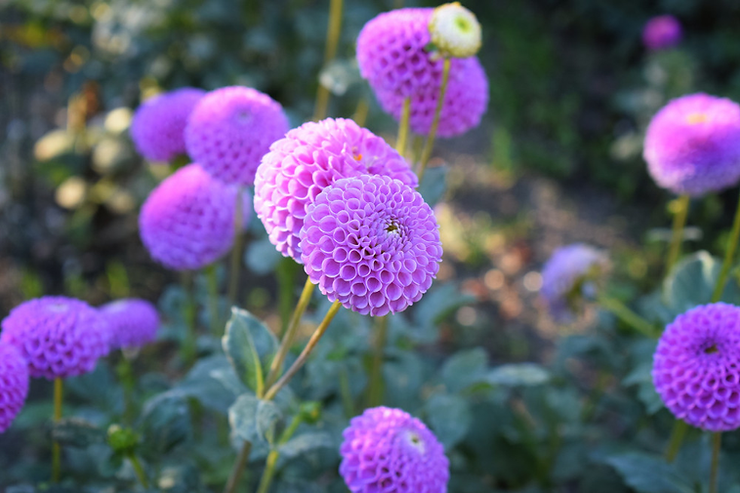
Soil Preparation and Requirements
Soil Type
Good soil is key. Dahlia tubers thrive on loose, well-drained, nutrient rich, loamy soil. The rich soil feeds the tubers and encourages good root growth. This soil must be well-draining because the tubers will rot if they rest in standing, moist, soil.
Amend the soil with some organic compost (look at the package for correct amounts). Till it into the soil with a pitch fork to about one foot deep to allow the roots to spread and to improve drainage.
Fertilizer
Once the plant has sprouted (about 3 to 4 weeks after planting), add organic fertilizer (5-10-10) to the soil that is low in nitrogen (follow instructions on package). This type of fertilizer will encourage blooms and prevent excessive leafy growth. After the first application of fertilizer repeat every 3 to 4 weeks throughout the season.
If there is extreme heat and the plants become stressed, fertilize more frequently. The plant absorbs the fertilizer more quickly under these circumstances.
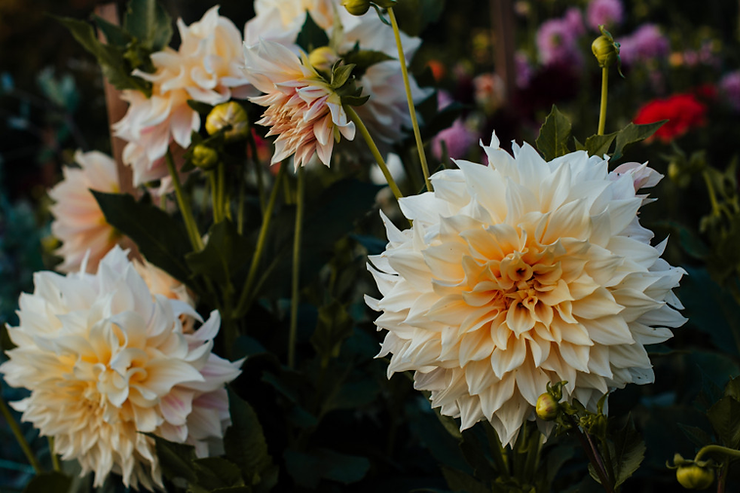
Berms
If you have clay soil which is very dense, or dry, compact soil, you will want to plant the dahlias in a berm made of rich soil full of nutrients. Since a berm is elevated and created with well-draining soil, the tubers will not rot as they would if the soil was nonporous.
===<Shop Dahlia Tubers at Etsy>===
Planting the Tubers
Timing/ When to Plant
Plant the tubers when the ground has warmed to around 60 degrees F or the air temperature does not drop below 50 degrees F during the night and day. A good rule of thumb is to plant them when you plant tomatoes outside.
You can also plant them inside before the warmer season begins. Use a pot at least 12 inches deep and the type of soil described above. Transfer them outside into the soil after the last possibility of a frost.
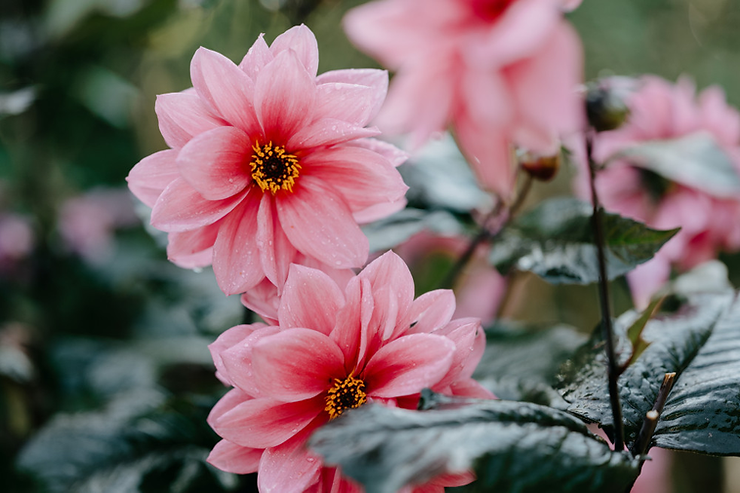
Spacing
There are many varieties of dahlias. Knowing the size of the dahlia is key to knowing how many tubers to plant in a square foot of soil.
Once you have checked the package for the size dahlia you have purchased, follow the general rule below:
- Largest dinner-plate variety: one tuber every 12 to 18 inches
- Compact variety: multiple tubers in a square foot (check spacing directions on package)
- Regularly sized variety: one tuber per square foot
Hole Size
Dahlias are usually dug in a relatively shallow hole. If they are of the large dinner-plate variety, plant them 6 inches deep. The more common varieties are to be planted 4 inches deep.
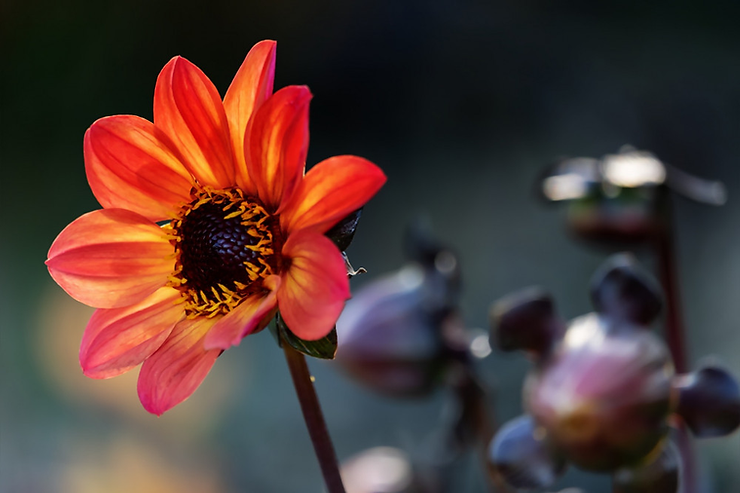
Planting Tubers
Place the tubers the appropriate depth below the surface of the soil with the crown side up and any “eyes” also facing upwards. That is from where the first stems will grow. The crown is the top of the tuber where all the “fingers” are connected.
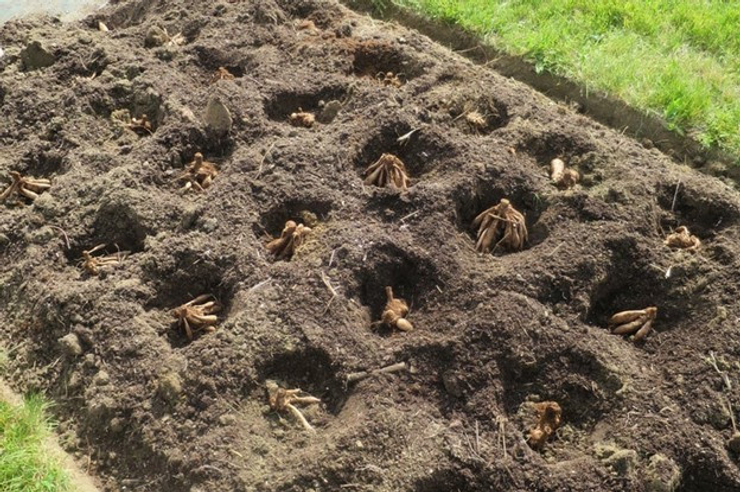
Staking
All varieties of dahlias will need staking. Stake the plant at the time of planting and use some soft ties or nylon string to secure them to the stake if you are only staking a few once they have grown. If you are planting a slew of them, use the method described in the Youtube video. I have found that a thicker bamboo (half inch diameter) is very sturdy and will withstand the elements. Use a mallet to hammer the stakes into the ground.
Light Requirements
Dahlias will bloom profusely if given 6 to 8 hours of direct sunlight. They will also thrive in partial shade during the heat of the day if you live in zones 8 or above. In fact, it is best to give them a bit of a rest from the extreme heat if you live in those zones.
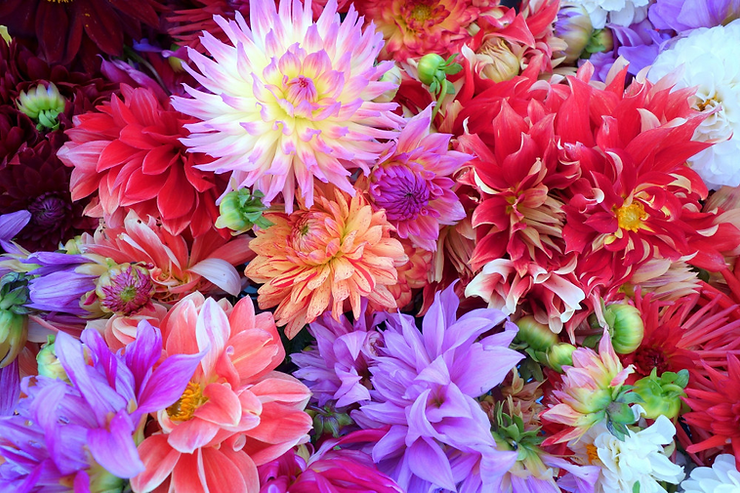
Water Requirements
After you have planted the dahlia tubers give them a good watering to eliminate any air pockets. Do not water them again until they begin to sprout. Water them deeply once or twice a week and avoid watering the foliage. If the temperature is extremely hot, they will need to be watered more frequently. Keep the soil moist to the touch but not soaking wet.
Dahlias in Containers
Dahlias can be grown in containers using the same instructions as above with a couple of caveats. If you choose to keep them in containers, follow the instructions below.
1. The container size must be no smaller than 12 inches deep by 12 inches wide.
2. Fertilize the flowers every 2 weeks once they begin to grow because the fertilizer washes through the container more quickly than if it were in the ground.
Pinching Dahlias for More Blooms
In order to have a larger plant with more blooms and stems, you should pinch the center stem. This process will delay the blooming season by a couple of weeks, but in the long run you will have more blooms later.
Once the plant has grown 12 to 18 inches, locate the center stem and cut it back by 3 to 4 inches. Your dahlia should have about 4 sets of leaves by now, so after you make the cut, you will still have 2 or 3 sets. This encourages side stems to grow. It also cultivates longer stems good for cutting. For more information on growing flowers for cutting, click here.
In addition to trimming the interior stem, deadhead. Deadheading is pinching off any spent blooms. This also encourages more buds to develop.
Overwintering
If you choose to dig the tubers up in the fall and replant them in the spring, follow these instructions.
1. Select the hardiest plant.
2. After a good frost, cut the plant back to 4 inches above the ground.
3. Wait one week and then dig up the roots and tubers starting a foot away from the stem.
4. Carefully remove any soil and allow the tubers to dry out away from frost and direct sunlight.
5. Place them in a paper bag or in a container in a cool, dark, and humid place where the temperatures are consistently between 40 and 50 degrees F. An unfinished basement or a root cellar works well. Do not allow them to freeze.
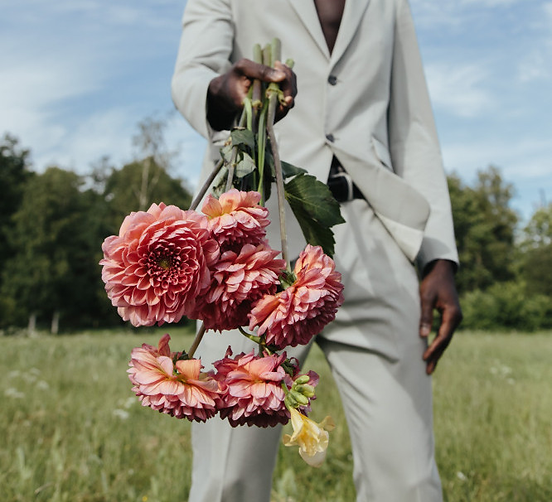
Final Thoughts – How to Grow Dahlia Plants
If you have a sunny garden, plant dahlias. According to the American Dahlia Society there are 42 species of dahlias, with oh so many hybrids! You could probably plant an entire garden of dahlias and have visitors not even realize they are from the same genus! Growing dahlias can be very rewarding. If you follow the instructions outlined here on type of soil, light, water requirements, and fertilizer, you will be lavishly rewarded with glorious blossoms great for cutting and bringing sunshine into your home.
I hope you have enjoyed this post. Please leave a comment below and share it with others.
Happy Gardening,
Nina
bestgardeningforbeginners@gmail.com



